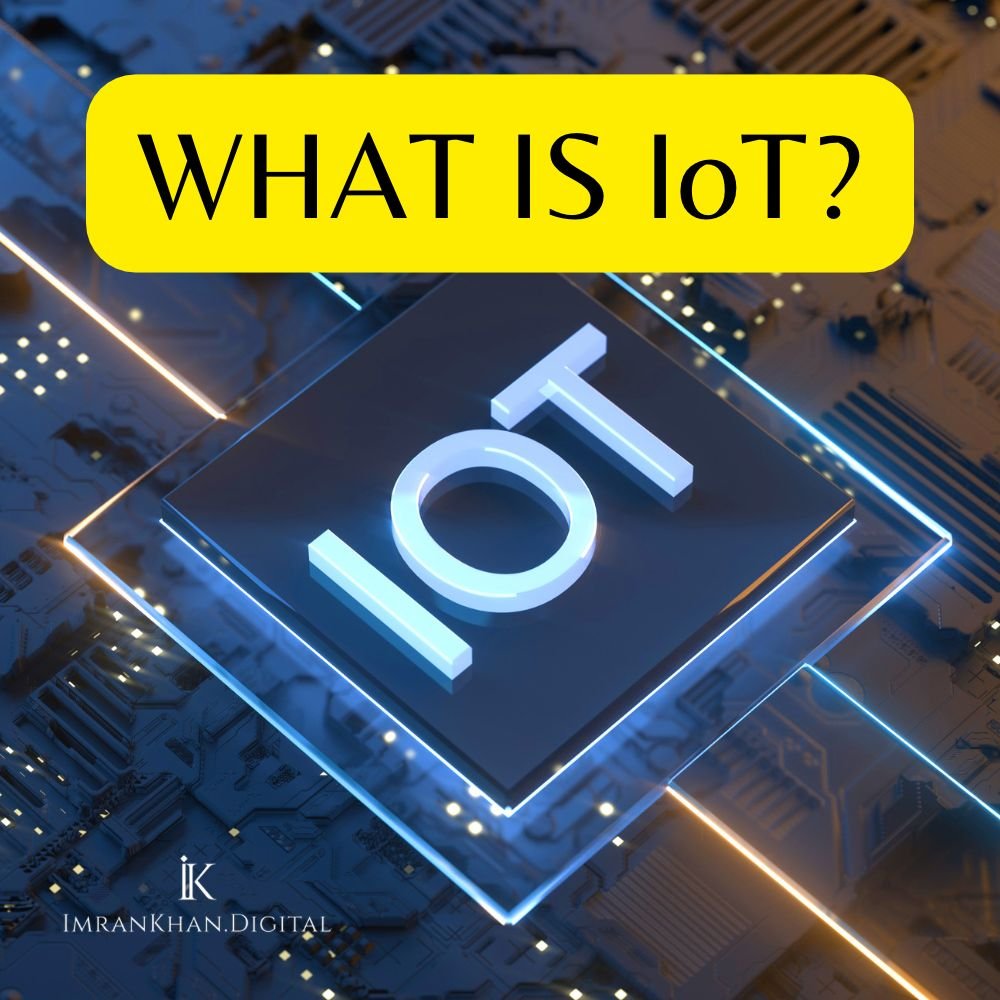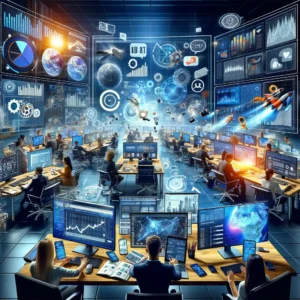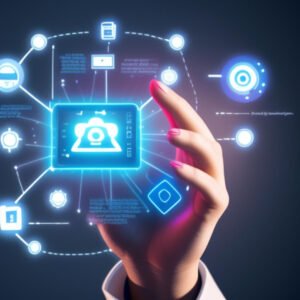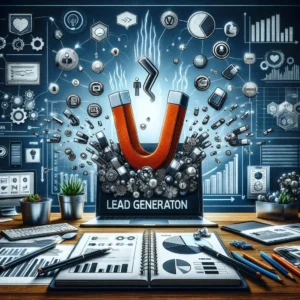
The Internet of Things (IoT) is an interconnected system of appliances, sensors, and other gadgets that link up with one another via the web. They are capable of working together to achieve common objectives such as turning on lights or irrigating plants.
Yet, we must remain aware of the safety and privacy concerns these devices present. For some, they may present a doorway to access our sensitive information without our knowledge or consent. To stay protected, it’s crucial that we are attentive while operating such items and actively take the steps to secure our data.
What does IoT mean?
IoT has revolutionized the way physical devices, vehicles, and home appliances interact with each other, thanks to the inclusion of sensors and software. The data exchange over the internet allows for easy and automated remote control, thereby maximizing efficiency and convenience. This incredible progress has completely changed the way we experience our everyday life.
How does IoT work?
By connecting physical objects, such as appliances, sensors, and devices, with wireless technology to the internet, the Internet of Things (IoT) establishes a network of multiple systems.
Once connected, these items are capable of sending and receiving data to each other, as well as other internet-enabled applications and systems. As an example, a smart thermostat may interact with other devices in a residence, like a smart light bulb, to adjust the temperature and lighting based on the homeowner’s preferences.
The uses of IoT technology are vast, ranging from smart homes to cities, healthcare, and industrial areas. Moreover, data harvested by IoT devices can be analyzed and utilized to maximize processes, decrease expenses, and amplify productivity.
History of IoT
In the 1980s, Carnegie Mellon University researchers created an internet-connected device, the first of its kind – a vending machine. This experiment proved that different devices could communicate with each other over the internet, leading to the development of the IoT.
In the 1990s, Kevin Ashton introduced the concept of interconnecting objects and enabling them to transfer data to perform autonomous tasks. This concept was named the “Internet of Things,” providing small business owners with tools to improve productivity.
The 2000s marked a significant advancement in technology, with wireless technology and mobile devices becoming more widely used. This led to a surge in the development of IoT, including the emergence of smart home systems, wearable technology, and integration of IoT in industrial and business processes.
As IoT technology continues to advance, it will become even more integrated into our daily lives. Innovations in healthcare, transportation, agriculture, and other industries will be revolutionized by IoT technology. Small business owners can benefit from investing in IoT and taking advantage of this opportunity.
What are IoT devices?
IoT devices are Internet of Things devices. These devices are connected to the internet and other physical objects to collect and exchange data. They enable physical objects to become intelligent and communicate with one another. These objects include things such as wearables, cars, and appliances.
By leveraging the power of sensors and communication networks, IoT devices can gather information to monitor activities and provide new, automated functions for both businesses and individuals. IoT is on the rise to revolutionize the way people live, work, and interact with each other, with profound implications for our society.
IoT devices examples
Let’s talk about the examples of IoT devices. Smart thermostats, home security systems, refrigerators with cameras, connected cars, self-driving vehicles, intelligent lighting systems, and smart home appliances are some of the examples. These connected devices are equipped with sensors and internet-capabilities that allow them to gather, analyze and share data about their environment.
By enabling real-time communication and monitoring of conditions in their surrounding environment, IoT devices provide an incredibly powerful and efficient means of managing energy use, tracking asset performance and enabling seamless user experiences.
What is IoT technology?
In my words, I would say it’s a combination of hardware, software and physical sensors. IoT, or the “Internet of Things,” is a term that refers to a network of physical objects (devices, vehicles, buildings, and other items) embedded with electronics, software, sensors, and connectivity to enable these objects to collect and exchange data.
This data can be used to create applications and services, from controlling temperature in a home, to monitoring patient health remotely, to improving transportation networks. IoT technology helps to make our lives more efficient, secure, and convenient.
Characteristics of IoT
IoT, or the Internet of Things, is a network of interconnected devices that use sensors and communication technology to gather, transfer, and share data with each other. These connected devices, often known as “smart” devices, provide unprecedented control and insights to individuals, businesses, and cities, alike. IoT applications range from small, local networks to much larger, cloud-connected systems, depending on the needs and goals of the users. Some of the core characteristics of IoT include:
1. Device connectivity: IoT networks typically have many connected devices that communicate with each other to transmit data or execute commands. The physical connections can be wired or wireless, but in most cases, they are networked to provide a higher degree of flexibility and scalability.
2. Edge computing: This enables devices to execute a range of computing functions at the network’s edge, thus reducing the need to process and transfer large amounts of data back to the cloud.
3. Security: With the growing interconnectedness of smart devices, the risk of security breaches increases exponentially. IoT systems need to be well-designed to ensure the safety of their users and their data.
4. Data integration: For most IoT systems, the data collected from all connected devices is stored and processed in one central location, and then presented in an organized and easily accessible way.
5. Automation: IoT networks are often equipped with automation capabilities that allow for the system to act and respond automatically, depending on the user’s preferences. This makes it possible for the users to set rules for how the system should react to certain situations and/or stimuli.
With these key characteristics in place, IoT can provide a world of convenience and efficiency, while also maintaining high levels of security and accuracy.
What is an IoT platform?
Let’s understand the IoT platform. An IoT platform is a type of platform that connects the physical and digital worlds and allows the use of data to power up the applications that run on it. It enables users to capture and process data from a variety of sensors, connected devices, and objects connected to the Internet.
It provides users with an effective means of connecting different systems and allows them to collaborate in real time, without needing physical connections. Ultimately, it provides users with a centralized control of all their connected systems, ensuring a secure and reliable data transmission and processing system.
What is IoT security?
IoT (Internet of Things) security is the practice of making sure connected devices, such as smartphones, tablets, and even smart home devices, are secure. It involves the use of various cybersecurity technologies and processes to protect IoT devices and networks against unauthorized access, malicious attacks, data loss, and breaches.
For example, proper authentication and authorization, firewalls, malware protection, and data encryption can all be used to secure IoT devices. IoT security also involves keeping software and firmware up-to-date and installing proper authentication systems for devices. Ultimately, the goal of IoT security is to ensure data privacy and system reliability for users.
What is an IoT gateway?
An IoT gateway is a bridge between physical devices in an Internet of Things (IoT) application and a central computer system or server. It helps filter data from multiple connected devices, meaning it serves as a filter between two or more connected systems, as well as acting as a hub or control center for an IoT network.
The gateway allows for a central control system to manage, analyze, and access the data coming in from connected devices. The gateway helps protect data privacy, ensuring that data is only sent to authorized locations, making sure unauthorized parties don’t gain access to critical data. With an IoT gateway, devices on the same network are connected more securely and are more resistant to hacking and other malicious activities.
What is IoT manufacturing?
IoT manufacturing is the process of using the internet of things (IoT) technology in the production process of manufacturing products. By connecting various sensors and components together, manufacturers can leverage the IoT to track real-time data from various machines, quickly diagnose and address malfunctions and reduce operational costs.
IoT also enables factories to implement an automated system for predictive maintenance, as well as reduce time-to-market for new products by leveraging connected devices to expedite production. This advanced form of production allows for a greater degree of customization for end users and faster delivery time for consumers.
What are IoT sensors?
IoT sensors are devices that detect changes in their environment and can send data to other devices through the Internet. They come in a wide variety of shapes and sizes, ranging from motion detectors to temperature sensors. In some cases, they are as small as a pinhead and can fit almost anywhere.
With IoT sensors, almost any device can be made smarter and connected to the Internet, giving users access to powerful features like automation and predictive analytics. They can even help reduce energy costs, increase security, and enhance convenience. IoT sensors are quickly becoming one of the most important aspects of the modern home.
What is IoT with example?
An example of the Internet of Things (IoT) would be a smart home system where appliances, lights, locks, and other items are connected to the internet and can be monitored and operated from a central app. For example, a homeowner could remotely turn off lights, unlock the front door for visitors, monitor their security system, or adjust the thermostat using their mobile device.
What are the types of IoT?
There are several types of IoT, including:
- Consumer IoT: These are IoT devices that are designed for personal use, such as smart home devices, wearables, and health monitors.
- Industrial IoT: These are IoT devices that are used in industrial settings, such as sensors in manufacturing plants, connected vehicles, and smart energy systems.
- Commercial IoT: These are IoT devices used in commercial settings, such as smart buildings, retail stores, and hospitality venues.
- Agricultural IoT: These are IoT devices used in agriculture, such as soil sensors, weather monitors, and livestock trackers.
- Healthcare IoT: These are IoT devices used in healthcare, such as medical monitors, patient trackers, and medication dispensers.
- Environmental IoT: These are IoT devices used to monitor and protect the environment, such as air quality sensors, water quality monitors, and weather sensors.
- Transportation IoT: These are IoT devices used in transportation systems, such as connected cars, smart traffic systems, and public transportation systems.
These are just a few examples of the types of IoT applications. The range of IoT applications is vast and growing rapidly as more and more devices become connected to the internet.
How is IoT different from the Internet?
The Internet and IoT (Internet of Things) are related but different concepts. The Internet is a global network of computers and servers that allows communication and information sharing between users all over the world. IoT, on the other hand, refers to the network of physical devices that are connected to the internet, enabling them to collect and exchange data with each other and other systems.
Here are some key differences between IoT and the Internet:
- Connectivity: While the Internet connects computers, smartphones, and other devices with screens, IoT connects physical devices, sensors, and machines that may not have screens or user interfaces.
- Data: The Internet is primarily used for transmitting data between users, whereas IoT is used for collecting and transmitting data between devices, sensors, and systems.
- Functionality: The Internet is mainly used for communication, entertainment, and information sharing, while IoT is used for automation, monitoring, and control of physical systems and processes.
- Scope: The Internet is a vast, global network that connects people and organizations all over the world, while IoT networks are more localized and specific to a particular industry or application.
Overall, while the Internet and IoT are related concepts, they have different functions and purposes in connecting and sharing information between devices and systems.
Final Words
As we become more connected to the world through the Internet of Things (IoT), the potential to leverage technology in ever-evolving ways is exponentially growing. The introduction of IoT has led to the ability to gather and evaluate significant amounts of data, automating tedious processes, and ultimately creating customized experiences. In essence, the ever-changing digital landscape, fueled by the advancements of IoT, is set to drastically revolutionize how we perceive, interact with, and adapt to the world around us. From revolutionizing smart homes and cities to impacting the realms of healthcare and manufacturing, IoT will be a prominent factor in our progress in the years to come.





